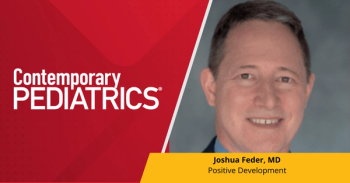
Daniele De Luca, MD, discusses zelpultide alfa in neonates at high risk of bronchopulmonary dysplasia development
A phase 1b study of zelpultide alfa demonstrated a favorable safety profile and encouraging early reductions in BPD and ventilation duration, supporting advancement to a pivotal international Phase 2b/3 program.
A phase 1b randomized, multicenter, dose-determination trial published in Frontiers in Pediatrics evaluated zelpultide alfa—an investigational recombinant human surfactant protein D—in preterm neonates at high risk of bronchopulmonary dysplasia (BPD).1
BPD continues to rank “among the most severe long-term complications of prematurity,” and unlike commercial surfactants, surfactant protein D plays a role in regulating innate immunity by clearing infectious pathogens and limiting pulmonary inflammation, wrote the study investigators in Frontiers.
The study enrolled intubated, mechanically ventilated preterm neonates who required at least one surfactant treatment within 96 hours of birth. Across dosing cohorts, a total of 37 subjects were randomized and treated.
Safety and Early Clinical Outcomes in Phase 1b
Safety and tolerability were the primary endpoints. Zelpultide alfa demonstrated a favorable safety profile at its highest administered dose of 6 mg/kg. In the trial, 92.9% of zelpultide alfa recipients and 100% of air-sham recipients experienced at least one adverse event. Mortality was 21% in the zelpultide alfa group and 0% in the air-sham group, though no deaths were related to the study drug.
While efficacy outcomes were exploratory, multiple signals favored zelpultide alfa. The incidence of BPD was 32.1% for zelpultide alfa versus 66.7% for air-sham, and the combined incidence of BPD or death was 54% versus 67%, respectively. Infants receiving zelpultide alfa also required fewer days on mechanical ventilation—17.7 days compared with 25.8 days in the air-sham group.
These results “endorse the safety and tolerability of zelpultide alfa up to 6 mg/kg (≤7 days) and reinforce the need for further clinical development," the authors concluded.
Progress toward a global phase 2b/3 program
In August of 2025, Airway Therapeutics announced that the European Medicines Agency Pediatric Committee (PDCO) approved the Pediatric Investigation Plan (PIP) for zelpultide alfa.2
The PIP includes a pivotal Phase 2b/3 study. The Phase 2b portion will evaluate two dose levels administered for up to seven days in 150 patients (50 per arm), followed by dose selection and continuation into a Phase 3 expansion enrolling approximately 216 additional infants.
In highlighting the urgency of improved preventive options, the study’s principal investigator, Daniele De Luca, stated: “Bronchopulmonary dysplasia remains one of the most challenging complications in neonatal intensive care, with long-term consequences for respiratory and neurodevelopmental outcomes." De Luca is a professor of Neonatology, Paris Saclay University and Division Chief of the NICU at Béclère Hospital. He noted that zelpultide alfa “represents a novel and scientifically promising approach” supported by mechanistic rationale."
Airway Therapeutics announced in August, following immediate submission to authorities in Italy, Spain, and Israel, for trial initiation for late 2025. Additionally, submissions were set to follow in France, Germany, Belgium, and Poland, along with planned regulatory filings in Argentina, Australia, and the United States.
Q&A with Daniele De Luca, MD, PhD
In a written interview with Contemporary Pediatrics, De Luca discusses mechanistic rationale, safety, early efficacy signals, dosing strategy, and next steps for zelpultide alfa in BPD prevention.
Contemporary Pediatrics:
Bronchopulmonary dysplasia remains a major concern in the care of preterm infants. How does zelpultide alfa, which consists of recombinant surfactant protein D, differ mechanistically from currently available surfactant therapies?
De Luca:
A major benefit of using surfactant protein D (SP-D) is its ability to combat inflammation. This is a completely different approach compared to current treatment options. Thus far, we have fought inflammation with steroids, which are rough on the patient and carry secondary effects. Zelpultide alfa (rhSP-D) is a replacement therapy that aims to give the patients something that (s)he needs and that would normally be produced endogenously, but is not being produced by the body due to preterm birth. We have done the same with other surfactant components since the 1980s, but SP-D is not included in any surfactant preparations, so giving SP-D is a purely physiological strategy and also the first actual innovation since the introduction of exogenous surfactant. Many existing surfactant preparations are also extracted from animals such as pigs, whereas this is a purely synthesized recombinant human version.
Contemporary Pediatrics:
Safety was the primary focus of this phase 1b study. What should neonatologists and pediatric intensivists know about the safety and tolerability profile observed with zelpultide alfa at doses up to 6 mg/kg?
De Luca:
No safety issues were observed in the study. Quite on the contrary, there may be some positive signals. In fact, in such a very high risk and critical population, 92.9% of zelpultide alfa subjects vs. 100.0% of those that received air-sham experienced ≥1 adverse event. The phase I study, although it is just the first trial, is very encouraging at the high dose of 6 mg/Kg.
Contemporary Pediatrics:
While efficacy outcomes were exploratory, infants who received zelpultide alfa had lower rates of BPD and shorter ventilation times. How clinically meaningful are these early trends for frontline neonatal care?
De Luca:
If these data are confirmed in the subsequent trial, zelpultide alfa (rhSP-D) is going to be a game changer. Many NICUs still struggle to shorten invasive ventilation times, and zelpultide alfa could solve that issue very easily. I am not surprised at all to see rates of BPD reduced as the ventilation-induced inflammation and lung injury are prevented, all without the side effects of steroids.
Contemporary Pediatrics:
Dosing optimization is critical in this population. What did this trial reveal about the most appropriate dosing strategy to move forward in future studies?
De Luca:
All doses were found to be safe and well-tolerated. I personally tend to believe that the higher the dose, the better. Zelpultide alfa (rhSP-D) is replacing something that is lacking but would normally be naturally produced. So, it is likely that the highest dose tested so far is the best way to go.
Contemporary Pediatrics:
Based on these findings, what are the next steps in the clinical development of zelpultide alfa, and how might this agent eventually fit into BPD prevention strategies in the NICU?
De Luca:
We look forward to the completion of the second clinical trial, which, in my opinion, should bring the drug directly to registration and approval. If results are as we hope, this is going to be a game changer as it will be the first, entirely “physiological” drug to prevent BPD and to be given in the very first days of life. In the current scenario, there is no other licensed drug competing with zelpultide alfa (rhSP-D).
References:
- Alonso-Ojembarrena A, Poindexter B, Aleem S, et al. A phase 1b randomized, multicenter, dose determination trial of zelpultide alfa (recombinant human surfactant protein D) in preterm neonates at high risk of developing bronchopulmonary dysplasia. Front Pediatr. doi:10.3389/fped.2025.1639573.
- Airway Therapeutics receives European Medicines Agency Pediatric Committee approval for zelpultide alfa's study plan in bronchopulmonary dysplasia for very preterm infants. Airway Therapeutics. Press release. Published August 12, 2025. Accessed November 21, 2025. https://www.prnewswire.com/news-releases/airway-therapeutics-receives-european-medicines-agency-pediatric-committee-approval-for-zelpultide-alfas-study-plan-in-bronchopulmonary-dysplasia-for-very-preterm-infants-302527004.html
Newsletter
Access practical, evidence-based guidance to support better care for our youngest patients. Join our email list for the latest clinical updates.










